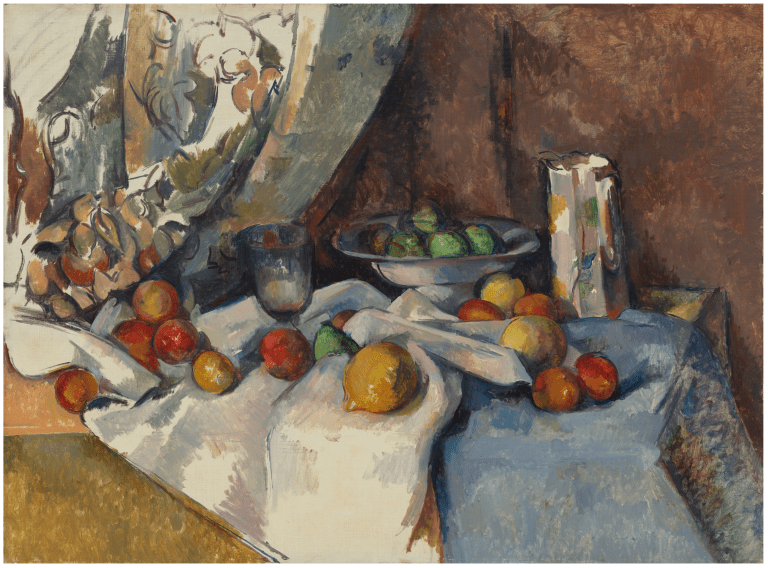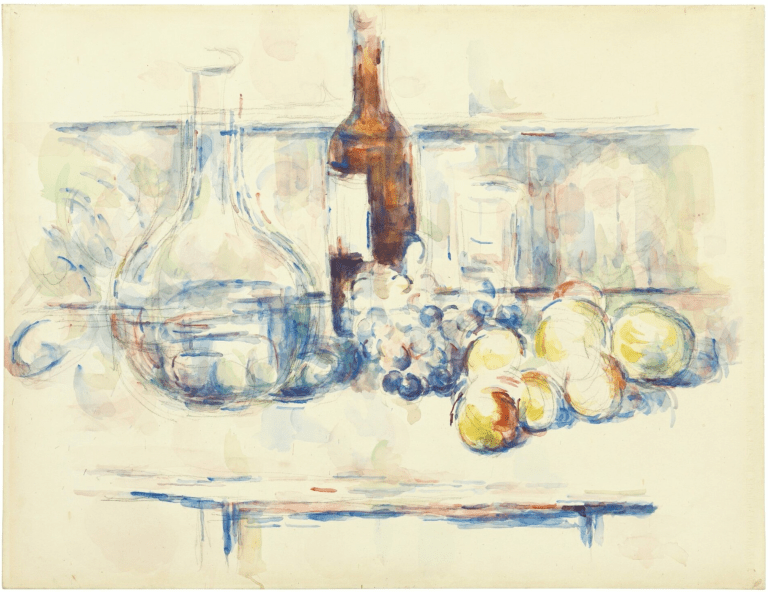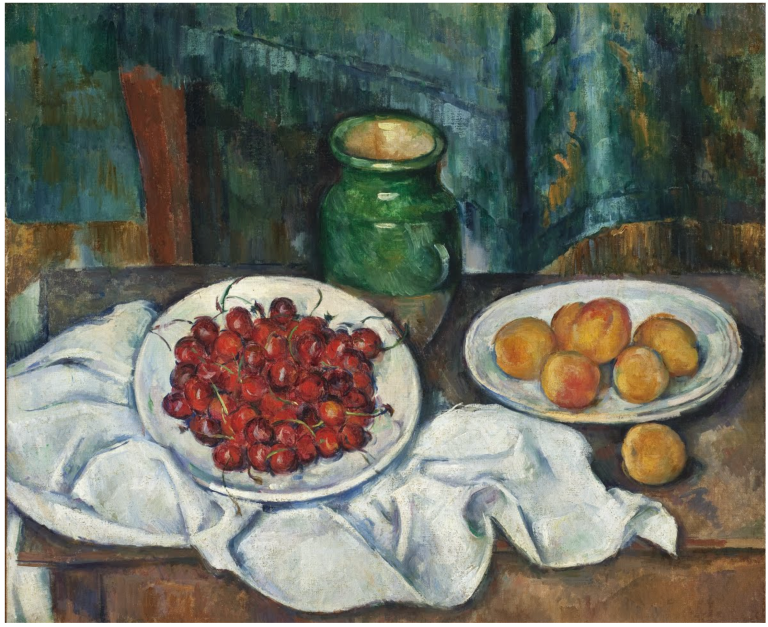Home Art Project 7: Cezanne’s rhythms and shifts

A change occurred in Paul Cézanne’s approach to painting and drawing which had a significant impact upon artists and how they made art. Cézanne was dedicated to painting from observation but rather than seeing drawing and painting as a copying of reality, he saw it as a way of recording the “sensations” he obtained through observation. He did not see painting as the making of an illusion which represents reality, so he maintained our consciousness of the tools of paint and the canvas used in his recording. In his work, we can see that brush marks are evident as is the canvas which is sometimes left bare.
Cézanne’s also broke with rules of perspective by painting slightly different viewpoints. In Still Life with Apples we can see the right side of the front edge of the table is not aligned with the left. Objects or planes such as the front right edge of the table tilt towards us. Some parts of the canvas are also left uncovered and the work appears unfinished. Even the edges might sometimes have a double edge, or a shifting or dissolving edge like in the watercolour below.
The use of brush marks and the way in which Cézanne worked with each mark, shape and form, knitting them together, enabled him to create wonderfully rhythmic images where the elements seems to harmonise with each other. Space and forms emerge also maintain a very considered relationship to each other. They also sometimes emerge and withdraw, adding an additional dynamic to the work.

This project is the drawing or painting of a Still Life, thinking of it as a recording of how you see rather than a copy of that you are observing.
Set up a simple Still life on a table. Draw some parts of the Still life from a closer angle. Move slightly and continue with the drawing your Still lIfe. In a similar way to how you resolved shifting objects in the Zoe Frank project several weeks ago, you will need to resolve how drawing from different viewpoints integrate together. Think of the marks you are making and how they build together while each maintaining their own character.

Children’s text
Paul Cézanne liked to work from things he could see. However he wasn’t very concerned with whether his painting looked like what he was seeing. What interested him was that he was making a record of how he saw. So he would leave the drawing or paint marks as he made them, while also getting them to sit happily together. Sometime he would shift how he looked at something, as if he had moved, so that he was looking from a different angle. You can see this with the bowl of cherries above, which looks as though we are looking down upon it while we are also looking across the table
This project is the drawing of a Still Life, thinking of it as a recording of how you see rather than a copy of that you are observing.
Set up a simple Still life on a table. Draw some parts of the Still life from a closer angle. Move slightly and continue with the drawing your Still lIfe. Try to get everything in the drawing to look good together, even though you moved.